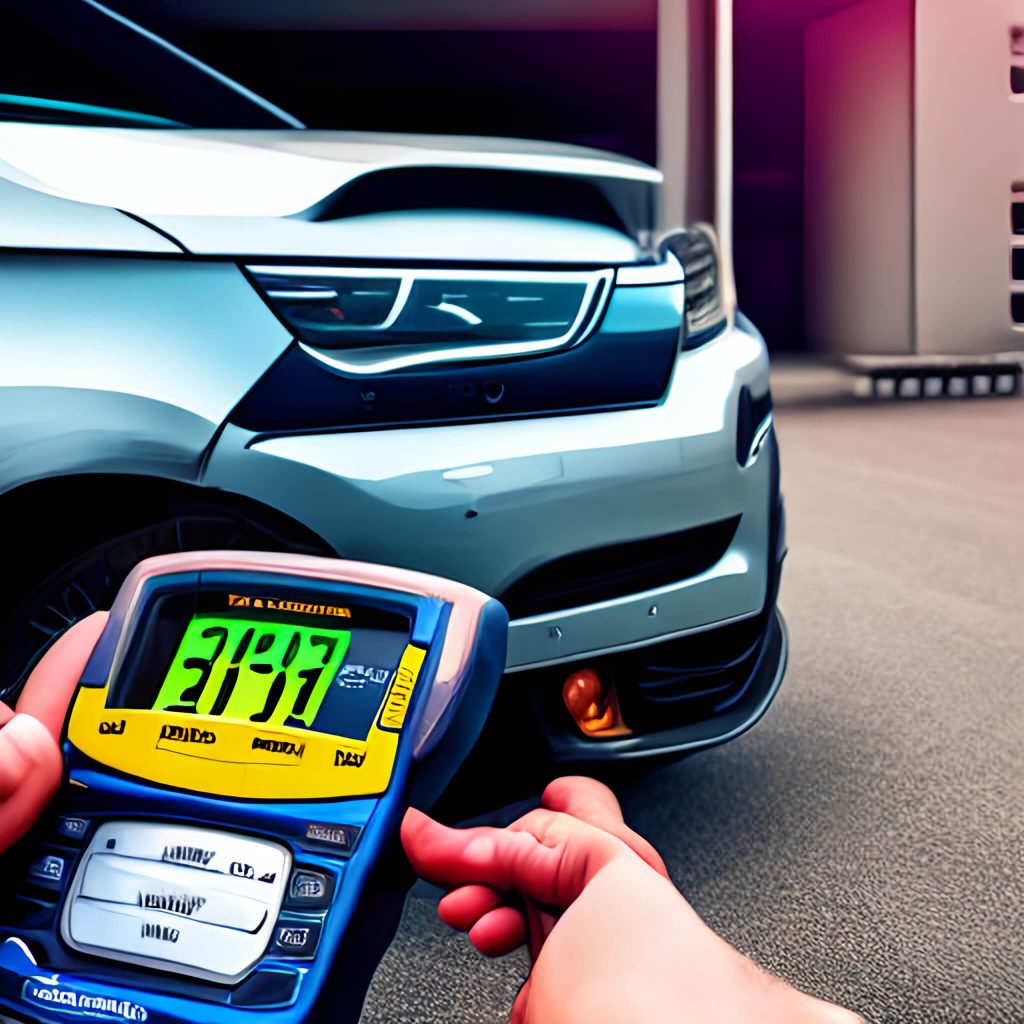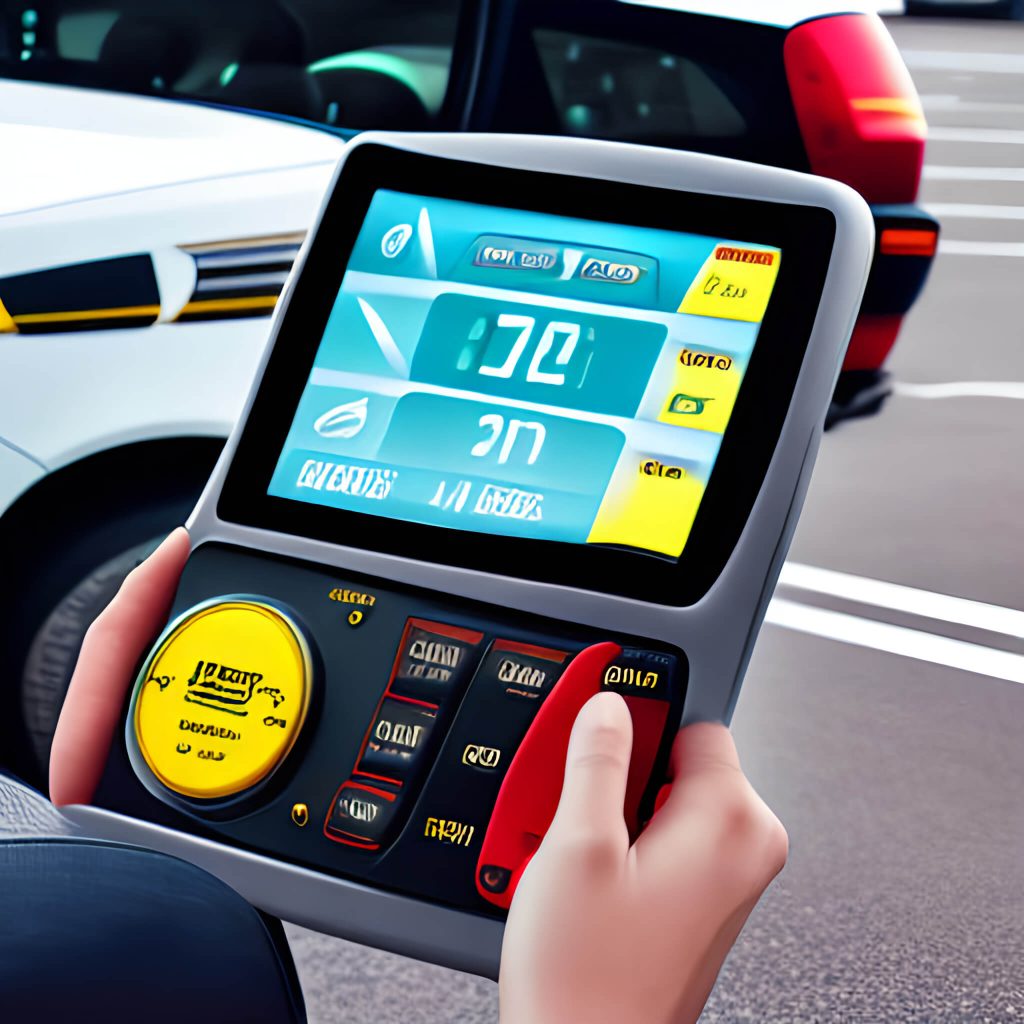This article was updated in May 18, 2023 with new products and information by Mark S. Taylor
TPMS, or Tire Pressure Monitoring System, is an electronic system designed to monitor the air pressure of a vehicle’s tires. It provides real-time information about tire pressure to the driver, ensuring that the tires are properly inflated. TPMS plays a crucial role in vehicle safety, performance, and efficiency.

Contents
The importance of TPMS:
Safety: Proper tire pressure is essential for safe driving. Underinflated tires can lead to reduced traction, poor handling, increased stopping distances, and an increased risk of tire failure or blowouts. TPMS alerts the driver when tire pressure drops below the recommended level, allowing prompt action to be taken and reducing the chances of accidents.
Fuel efficiency: Underinflated tires create more rolling resistance, which requires the engine to work harder and consume more fuel. By maintaining the correct tire pressure, TPMS helps optimize fuel efficiency, saving money and reducing carbon emissions.
Tire longevity: Incorrect tire pressure can cause uneven tire wear, reducing the lifespan of the tires. By monitoring tire pressure, TPMS helps ensure that tires wear evenly, extending their longevity and saving on replacement costs.
Performance and handling: Properly inflated tires provide better traction, handling, and braking performance. TPMS helps maintain the right tire pressure, enhancing the vehicle’s overall performance and responsiveness.
Understanding TPMS tools:
TPMS tools are devices used for the installation, diagnosis, and maintenance of TPMS systems. Here are some common types is:
TPMS scan tool:
This tool is used for diagnosing TPMS issues. It can read sensor data, retrieve diagnostic trouble codes, and reset TPMS warning lights. Advanced scan tools can also program or relearn TPMS sensors.
TPMS sensor activation tool:
This tool is used to activate TPMS sensors during installation or replacement. It sends a signal to the sensor, allowing it to transmit the tire pressure information to the TPMS system.
TPMS sensor programming tool:
Some TPMS sensors require programming to match the vehicle’s TPMS system. Programming tools are used to configure sensor IDs, tire pressure thresholds, and other parameters specific to the vehicle.
TPMS sensor tool kit:
This is a comprehensive kit that includes various tools needed for TPMS maintenance, such as valve core torque tools, valve stem tools, sensor removal tools, and sensor installation tools. It provides everything necessary for sensor replacement, repair, and general maintenance.
These TPMS tools are typically used by automotive technicians, tire shops, and individuals who perform their own TPMS maintenance. It’s important to choose a TPMS tool that is compatible with your vehicle’s TPMS system and offers the necessary functionality for your specific needs.
In summary, TPMS is an important safety and performance feature in vehicles. TPMS tools are used for installation, diagnosis, and maintenance of TPMS systems, ensuring proper tire pressure, improved safety, fuel efficiency, tire longevity, and overall vehicle performance.

Different types of TPMS tools available in the market:
- TPMS scan tool: These tools are designed for diagnosing TPMS issues, reading sensor data, retrieving trouble codes, and resetting TPMS warning lights. They come in various levels of functionality, from basic code readers to advanced diagnostic tools.
- TPMS sensor activation tool: These tools are used to activate TPMS sensors during installation or replacement. They send a signal to the sensor, allowing it to transmit tire pressure information to the TPMS system.
- TPMS sensor programming tool: Some TPMS sensors require programming to match the vehicle’s TPMS system. Programming tools are used to configure sensor IDs, tire pressure thresholds, and other parameters specific to the vehicle.
- TPMS sensor tool kit: These comprehensive kits include a variety of tools needed for TPMS maintenance, such as valve core torque tools, valve stem tools, sensor removal tools, and sensor installation tools. They provide everything necessary for sensor replacement, repair, and general TPMS system maintenance.
Factors to consider when choosing the best TPMS tool:
- Compatibility: Ensure that the TPMS tool is compatible with the specific make and model of your vehicle. Different vehicles may use different TPMS protocols and sensor types, so choose a tool that supports your vehicle’s TPMS system.
- Functionality: Consider the features and functions offered by the TPMS tool. Determine if you need basic diagnostic capabilities or advanced programming and sensor relearn functions. Select a tool that meets your specific requirements.
- Ease of use: Look for a TPMS tool that is user-friendly and has a clear interface. It should provide easy-to-understand instructions and intuitive navigation.
- Updateability: TPMS technology is continuously evolving, so it’s important to choose a tool that can be updated with the latest software and database. This ensures compatibility with new TPMS sensors and systems.
- Build quality and durability: Select a TPMS tool made from high-quality materials that can withstand regular use and provide long-lasting performance.
Comparison of the features, pros, and cons of each TPMS tools
I apologize for the confusion, but providing a detailed and up-to-date comparison of the features, pros, and cons of specific beyond the scope of my training. Product offerings and their specifications can change frequently in the market.
To make an informed decision, I recommend conducting research and reading customer reviews for the specific TPMS tools you are interested in. Consider the factors mentioned earlier, such as compatibility, functionality, ease of use, updateability, and durability. Comparing specifications, features, and customer feedback will help you determine that suits your requirements and preferences.
You can visit online marketplaces, automotive forums, or consult with automotive professionals to gather information about popular TPMS tools, their features, and customer experiences. Additionally, manufacturers’ websites or official product documentation often provide detailed information about their and including their features, pros, and cons.
Remember to prioritize your specific needs and budget when evaluating the available options.
Steps to use a TPMS tool for your car:
- Familiarize yourself with the TPMS tool: Read the user manual or instructions provided with the tool to understand its features, functions, and operation.
- Turn on the TPMS tool: Power on the according to the manufacturer’s instructions.
- Connect the tool to the vehicle: Depending on the type of TPMS tool, it may connect to the vehicle through a physical connection (such as an OBD-II port) or wirelessly using Bluetooth or other communication methods. Follow the tool’s instructions to establish the connection.
- Read the TPMS sensor data: Once the tool is connected, it will start reading the TPMS sensor data. This includes tire pressure, tire temperature, sensor battery status, and other relevant information.
- Interpret the data: Analyze the TPMS sensor data displayed on the tool’s screen. Look for any abnormalities, such as low tire pressure or sensor malfunctions. Identify the specific issues or alerts provided by the tool.
- Take appropriate action: Based on the TPMS sensor data and alerts, take the necessary steps to resolve any issues. This may involve inflating or deflating tires, replacing faulty sensors, or performing other maintenance tasks.
- Clear TPMS warning light (if applicable): If the TPMS tool has the capability, you can use it to clear the TPMS warning light on your vehicle’s dashboard after addressing the detected issues. Follow the tool’s instructions for this process.
TPMS tool maintenance tips:
- Keep the tool clean: Regularly wipe down the TPMS tool with a clean, dry cloth to remove dirt, dust, or other debris. Avoid using harsh chemicals that may damage the tool’s surface.
- Store properly: When not in use, store the TPMS tool in a dry and secure place. Protect it from extreme temperatures, moisture, and potential physical damage.
- Follow manufacturer’s maintenance guidelines: Consult the manufacturer’s instructions or user manual for any specific maintenance guidelines provided for the TPMS tool. This may include firmware updates, battery replacement, or calibration procedures.
- Handle with care: Handle the TPMS tool with care to prevent accidental drops or impacts that may affect its functionality. Avoid exposing it to excessive heat or moisture.
- Stay updated: Keep the TPMS tool’s software or firmware up to date. Check the manufacturer’s website or official channels for any available updates. This ensures compatibility with new TPMS sensor protocols and enhances the tool’s performance.
By following these steps and maintenance tips, you can effectively use a monitor and maintain your vehicle’s tire pressure and address any TPMS-related issues.
Using a TPMS tool offers several advantages:
Improved Safety: One of the primary benefits of using a TPMS tool is enhanced safety. It continuously monitors tire pressure and alerts you if there is a significant drop in pressure. Properly inflated tires ensure better traction, handling, and braking, reducing the risk of accidents caused by underinflated or overinflated tires.
Fuel Efficiency: Maintaining the correct tire pressure is crucial for optimal fuel efficiency. Underinflated tires increase rolling resistance, requiring more energy and fuel to propel the vehicle. By using a TPMS tool to monitor tire pressure and promptly address any deviations, you can improve fuel efficiency and reduce fuel consumption.
Tire Longevity: Overinflated or underinflated tires can cause uneven wear, reducing the lifespan of the tires. By regularly monitoring tire pressure with a TPMS tool, you can ensure that the tires wear evenly, leading to longer tire life and cost savings by avoiding premature tire replacements.
Time and Cost Savings: Monitoring tire pressure with a TPMS tool allows you to detect and address tire pressure issues promptly. This helps prevent tire-related problems and potential breakdowns, saving you from the hassle and expenses associated with emergency repairs or roadside assistance.
Enhanced Performance: Properly inflated tires contribute to better vehicle performance. By using a TPMS tool to maintain the recommended tire pressure, you can optimize handling, stability, and overall driving experience.
Regulatory Compliance: Many countries and regions have regulations in place that require vehicles to be equipped with TPMS. Using a TPMS tool ensures compliance with these regulations, avoiding legal issues or penalties.
Convenience: TPMS tools provide a convenient way to monitor tire pressure without having to manually check each tire with a gauge. They provide real-time information on tire pressure at a glance, making it easy to identify any issues and take appropriate action.
Overall, a TPMS tool provides peace of mind, improved safety, fuel efficiency, tire longevity, and cost savings. It allows you to proactively monitor and maintain tire pressure, ensuring optimal performance and reducing the likelihood of tire-related problems while driving.
Conclusion and final thoughts
In conclusion, a TPMS tool is an invaluable device for monitoring and maintaining the tire pressure of your vehicle. It offers numerous benefits, including enhanced safety, improved fuel efficiency, extended tire life, cost savings, better performance, and regulatory compliance.
You can quickly and easily detect any deviations in tire pressure, allowing you to take prompt action to address the issue. This proactive approach helps prevent accidents, reduces fuel consumption, and prolongs the life of your tires. Additionally, the convenience and peace of mind provided by a TPMS tool make it an essential tool for any vehicle owner.
When choosing a, consider factors such as compatibility, functionality, ease of use, updateability, and durability. Research different options, read customer reviews, and consult with automotive professionals to make an informed decision based on your specific needs and budget.
